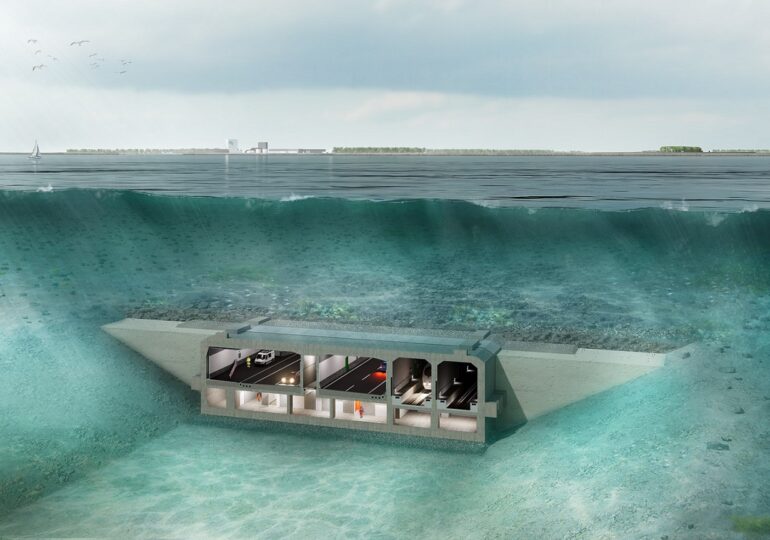The first section of the longest underwater tunnel in the world has been completed. The seabed thoroughfare will be 18 kilometers long and will include a highway and a railway line, significantly shortening the distance between Denmark and Germany.
Work on the Fehmarnbelt tunnel is progressing as planned. In May, the first concrete section was completed, following which it was allowed to cure for three weeks before moving on to the next stage – installing the steel watertight walls and ballast tanks to ensure the stability of the element during the immersion process.
The 217-meter-long concrete element is made up of nine segments, each 24 meters long. The tunnel will consist of 79 elements of this type, along with 10 special elements with space for technical installations, according to Femern A/S, the Copenhagen-based company responsible for the project's design.
7 minutes by train, 10 minutes by car
With a length of 18 kilometers, the Fehmarnbelt tunnel will connect the Danish island of Lolland and the German island of Fehmarn, as reported by Newsweek.
The car journey from Scandinavia to Central Europe will take 10 minutes. And by train even less - just 7 minutes, instead of 45 minutes by ferry, contributing to the development of tourism and the decarbonization of Denmark and Germany.
Construction began in 2020 on the Danish side and in 2021 on the German side. The current focus is on dredging the tunnel trench and building new causeways in Lolland.
The tunnel, named after the 19-kilometer Fehmarn Sound in the Baltic Sea under which the tunnel will be built, will be approximately 41 meters wide and located at a depth of 130 meters.
Denmark will be responsible for financing the project, whose costs were estimated at 5.5 billion euros in 2008 and have now reached 7.7 billion euros. The funding will be partially covered by the toll paid by those who will pass through the tunnel after its inauguration.
The tunnel is considered a priority project by the European Union, which has so far funded several similar works with the goal of creating a pan-European transport network.
Through its Connecting Europe financing facility, the EU has granted Fehmarnbelt subsidies of around 1.2 billion dollars so far, to cover design and construction costs.
Environmental controversies are not lacking
Like any major infrastructure project on the Old Continent, the Fehmarnbelt tunnel is not immune to controversies regarding its environmental impact.
The project developers argue that the tunnel will be an environmentally friendly transport solution, offering a greener alternative to flights from Scandinavia to Central Europe.
"Although such infrastructure projects emit substantial carbon emissions from construction, some have the potential to repay them over time through lower emissions from reduced or modified traffic patterns. The Fehmarnbelt tunnel is one such project," said Søren Have from the climate analysis organization CONCITO.
However, this view is not shared by Germany's oldest environmental association, Naturschutzbund Deutschland (NABU). Anne Böhnke-Henrichs, a marine conservation policy officer at NABU, told Newsweek that the Fehmarnbelt tunnel "contradicts a green transition."
"The project includes a large highway component that conflicts with the European goal of shifting traffic from roads to railways. However, it is expected to attract only one million passengers annually, far too few to be economically viable," said Böhnke-Henrichs, citing a 2020 report from the European Court of Auditors that questions the economic viability of numerous transport megaprojects in which the EU has invested.
Furthermore, the tunnel construction risks affecting "some of the most diverse reefs in this part of the Baltic Sea," she added.
The tunnel's inauguration is scheduled for 2029.
T.D.

